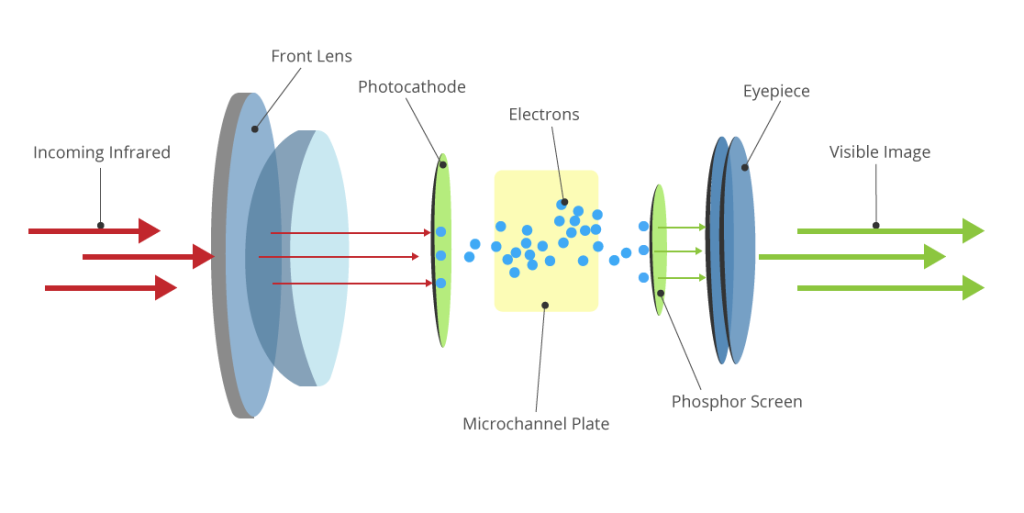CANBERRA – Researchers at the Australian National University have developed an ultra-thin film that can convert standard spectacles into affordable, lightweight night vision glasses. The breakthrough, which requires no external power source, could revolutionise industries from civil transport and security to defence and emergency services by making clear night-time sight widely accessible.

Australian Scientists Stun World with Invention That Makes Night Vision
| Key Fact | Detail |
| The Invention | An ultra-thin “metasurface” film that grants night vision capabilities to normal glass. Nature Photonics Journal |
| Primary Benefit | Lightweight, power-free, and potentially low-cost compared to current bulky technology. |
| Core Technology | Nanotechnology manipulates non-visible infrared light, converting it into visible light for the wearer. |
| Potential Applications | Civilian driving safety, law enforcement, search and rescue operations, and military use. |
A team at the Australian National University (ANU) has created a pioneering nanoscale film that could soon make cumbersome, battery-powered night vision goggles obsolete. Detailed in the latest issue of the peer-reviewed journal , the invention paves the way for a new generation of night vision glasses that are as simple and lightweight as a standard pair of spectacles.
“We have made the invisible visible,” said lead researcher Dr. Rocio Vargas from the ANU Research School of Physics in a statement. “Our technology is able to transform infrared light, which is normally invisible to the human eye, and turn it into images we can clearly see—even at a distance.”
Unlike traditional night vision equipment, which is often heavy and requires cooling systems and electricity, the ANU-developed film is passive. It works by directly converting photons from the infrared spectrum into the visible spectrum, a process known as optical upconversion.
How the Nanotechnology Works
The foundation of the breakthrough is a meta surface—an engineered surface constructed with features smaller than the wavelength of light. This surface is covered in millions of tiny nanoparticles, each precisely designed to capture low-energy photons from infrared technology sources like ambient heat from bodies or objects.
“Think of it as two infrared photons coming in, and one visible, higher-energy photon going out,” Dr. Vargas explained. “These nanoparticles act as a kind of antenna that captures the infrared light and then funnels its energy to create a new form of light that our eyes are equipped to see.”
This process occurs instantly on the film itself, which is thinner than a sheet of cling wrap. The film can be applied directly to glass lenses, integrating seamlessly without the need for complex electronics or bulky housing.

Potential Applications and Global Impact
Experts believe the implications of this development are extensive, with significant potential to improve safety and operational effectiveness across numerous sectors.
Civilian and Commercial Uses
For civilians, the technology could drastically reduce night-time driving accidents, which account for a disproportionate number of road fatalities. It could also provide a major advancement for personal security systems and assist individuals suffering from night blindness. Wildlife biologists could also use the glasses for non-invasive nocturnal observation.
Defence and Emergency Services
The strategic advantages for military, police, and emergency services are profound. Current night vision goggles often emit a faint glow or require an active infrared illuminator, which can reveal the user’s position.

“A passive, lightweight system that provides clear imaging is the holy grail for night-time operations,” said Dr. Ben Carter, a defence technology analyst at the Australian Strategic Policy Institute (ASPI). “This would offer a significant tactical advantage for soldiers, law enforcement, and search and rescue teams who need to navigate difficult terrain in complete darkness without giving away their location.”
From Lab to Market: The Path Ahead
While the technology has been successfully demonstrated in a laboratory setting, the research team acknowledges that a commercially available product is still several years away. The next phase will focus on refining the film’s efficiency and developing cost-effective, large-scale manufacturing processes.
“Our immediate goal is to improve the image brightness and clarity,” stated Dr. Vargas. “We are confident that within the next five to ten years, this technology will have matured enough to begin appearing in real-world products.”
The research, funded in part by the Australian Research Council, represents a major achievement in the field of optics and materials science. It places Australian innovation at the forefront of a technology with the potential to grant clear sight in the dark to millions around the world.
Centrelink EasyPay System Getting Major Update From September 6 – What It Means for You
Centrelink Busts Big Myth About $1,732 Pension As ‘Soft Retirement’ Trend Grows
FAQs
1. How do these new night vision glasses work?
They use a special nanoscale film applied to glass lenses. This film captures invisible infrared technology light and converts it directly into visible light through a process called optical upconversion, requiring no batteries or external power.
2. How is this different from current night vision goggles?
Current night vision technology typically amplifies tiny amounts of visible light or converts thermal radiation into an electronic image, which requires bulky hardware and a power source. The ANU invention is a passive film, making it lightweight, power-free, and potentially much cheaper.
3. When will these night vision glasses be available to the public?
Researchers estimate that after further development in manufacturing and efficiency, a commercial version could be available within the next five to ten years.





